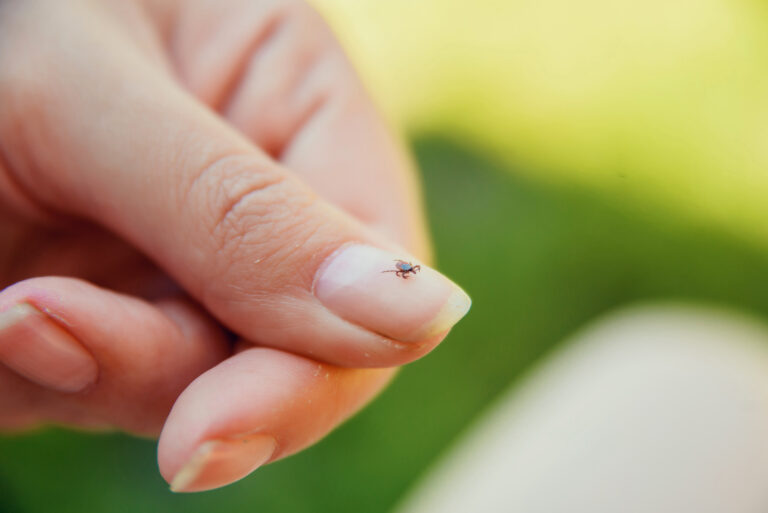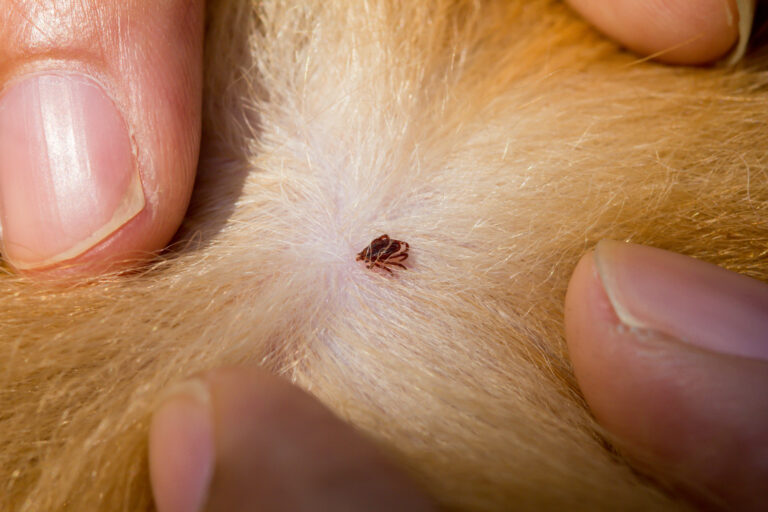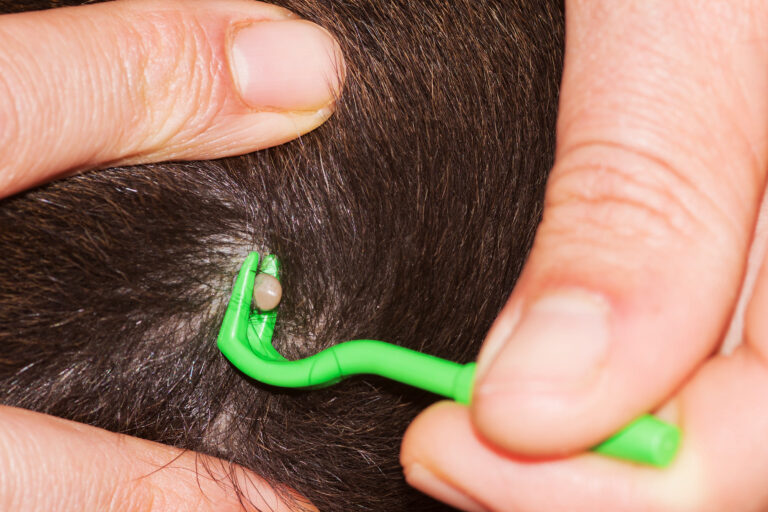One of the few drawbacks of spending time outside with your dog is the risk of tick bites. While most commonly found in wooded areas and tall grass, these little blood-suckers can live (and even thrive) in coastal areas, cities, and more.
Bites from ticks can be uncomfortable and, at worst, the catalyst for serious diseases, so it’s important to regularly check your dog (and yourself!) for ticks. Prevention is the most important tool for fighting ticks—you should consult your vet about a suitable prevention plan for your dog. But ticks happen. And if you find a tick on your dog, it’s imperative to remove them properly so they don’t harm your canine companion even after they’ve been killed. Here’s how to safely remove ticks from your dog.
Why should you worry about ticks?
While most commonly associated with high elevations, wooded areas, and tall grass, ticks can live pretty much anywhere. Their populations are increasing and they’re now found all across the U.S., likely as a result of warming temperatures. We’re simultaneously witnessing an increase in tick-borne diseases such as Lyme disease, ehrlichiosis, Rocky Mountain spotted fever, anaplasmosis, and babesiosis, which both humans and dogs can contract. A number of varieties of ticks are vectors for diseases, including the black-legged tick, or deer tick, brown dog-tick, and the American dog-tick.
That means every time you venture outside with your dog, whether on a long hike or just for a casual neighborhood walk, there’s a slight chance a tick will grab a ride on your dog—and possibly make them sick. They can also find their way onto you.
The first step in avoiding bites and their repercussions is proper tick prevention. There are a number of products on the market that can prevent ticks from attaching to your pet’s skin and causing infectious disease—be sure to discuss them with your vet to find the right solution for your dog. But if you spend any amount of time outside, you should prepare for hands-on intervention. Proper tick checking and removal are an important part of keeping you and your dog safe and healthy.
How to check for ticks
It’s important to check for ticks every time you come back from a walk or similar activity, because tick-borne diseases can be transmitted only hours after the tick first attaches itself.
For short-haired dogs, it might be possible to spot a tick just by looking, but that’s relatively rare thanks to tick size (they can be as small as a poppy seed or as large as the tip of a finger), so the best way to do your due diligence is to perform a feel test.
The feel test
Ticks feel hard, almost like a wart, so you can generally find them by running your hands along your dog’s skin.
Starting at the head and working your way back, run your fingers through your dog’s fur, next to the skin, like a fine-toothed comb.
Concentrate around these areas:
- Head, including around eyes, inside and behind ears, and under chin
- Neck, including under the collar.
- Feet, including bottom of paws and the spaces between their toes
- “Armpits” where the front legs meet the body
- Under their tail
What if your dog is anxious?
Some dogs are anxious and don’t take well to tick checks. If that’s the case, you can easily turn tick checks into a game by using treats and praise. Practice tick checks before doing the real thing: in what your dog thinks is a safe environment, every time you spread your dog’s fur, praise them and give them a treat, and immediately stop checking their fur.
Do this several times in a row, increasing the amount of time you spend performing a check every time. Eventually, you want to increase the time between treats and associate tick checks with a positive experience. As your dog becomes used to longer checks, start replacing treats with praise. The goal is to eventually get to a place where the value is in praise alone, so when you do a real tick check, you can just talk them through it.
What to do if you find a tick
First things first: do not try to remove the tick with your bare hands. Doing so can result in incomplete removal, which can still lead to infection of the bite site. You could also potentially squeeze the bacteria that causes a number of diseases into your dog. You want to make sure you remove the body and the head, including the teeth.
If you do find a tick, remain calm: your dog is likely fine. But be prepared to remove it and, depending on whether you live in an area with a large population of disease-causing ticks (such as the black-legged or deer tick, which frequently carries the bacteria that causes Lyme disease), keep the body for testing.
How to remove a tick from your dog
You’ll need either a specially designed tick remover (which you can find at your local pet store or pharmacy) or a pair of pointed (not blunt-tipped) tweezers, either of which will help you remove the entire tick.
Spread your dog’s fur, grab the tick as close to the skin as possible, and pull, very slowly and gently, up and away from the skin to minimize the chance of the mouth parts breaking off from the body and remaining embedded. Some hook-shaped tick removers require you to twist while you pull up, so always check the instructions on the tool before using, so you don’t leave behind their mouth parts.
After removing the tick, clean the bite area with rubbing alcohol and wash your hands thoroughly. If the area looks abnormal after the tick is removed, call your veterinarian for an appointment.
Save the tick in a plastic bag after you’ve removed it so it can be identified and your vet can determine if there are signs of feeding. Some people also get the ticks they remove tested for the bacteria that causes certain tick-borne diseases. Your vet may also perform a blood test for tick-borne diseases 4-6 weeks after exposure.
How to prevent ticks from biting your dog
Again, there are numerous tick preventives on the market, including chewable treats, topical ointments, shampoos, and even collars. Each preventive has benefits and drawbacks, and what you choose depends on your lifestyle and your dog’s personal health requirements, so it’s important to discuss which one is right for your dog with your vet.
While the tick population increase has people understandably worried about their dogs, the fact of the matter is that doing a quick daily tick check after a walk is a simple way to ensure you and your dog can keep enjoying your walks, hikes, camping adventures, and more.










